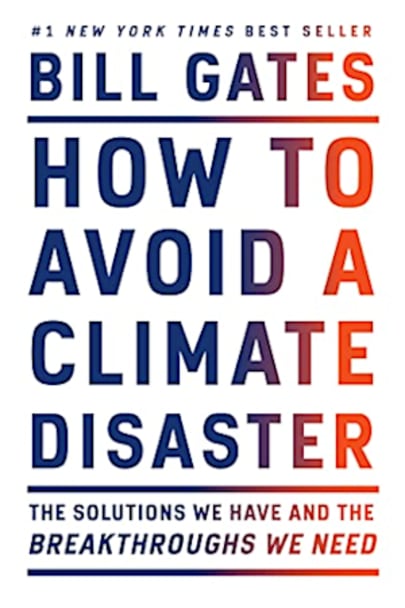#1 NEW YORK TIMES BEST SELLER • In this urgent, authoritative book, Bill Gates sets out a wide-ranging, practical—and accessible—plan for how the world can get to zero greenhouse gas emissions in time to avoid a climate catastrophe.Bill Gates has spent a decade investigating the causes and effects of climate change. With the help of experts in the fields of physics, chemistry, biology, … chemistry, biology, engineering, political science, and finance, he has focused on what must be done in order to stop the planet’s slide to certain environmental disaster. In this book, he not only explains why we need to work toward net-zero emissions of greenhouse gases, but also details what we need to do to achieve this profoundly important goal.
He gives us a clear-eyed description of the challenges we face. Drawing on his understanding of innovation and what it takes to get new ideas into the market, he describes the areas in which technology is already helping to reduce emissions, where and how the current technology can be made to function more effectively, where breakthrough technologies are needed, and who is working on these essential innovations. Finally, he lays out a concrete, practical plan for achieving the goal of zero emissions—suggesting not only policies that governments should adopt, but what we as individuals can do to keep our government, our employers, and ourselves accountable in this crucial enterprise.
As Bill Gates makes clear, achieving zero emissions will not be simple or easy to do, but if we follow the plan he sets out here, it is a goal firmly within our reach.
more



A rather thorough examination of what first world countries can do to get to zero carbon emissions by 2050 and why they should do it. I liked the behind-the-scenes look at how things work around the world, especially the use of different energy sources. And it also explains how humans are contributing to climate change (for those who didn’t know).
There were things that irritated me, though.
The need for heating and cooling houses: air-conditioning and furnaces aren’t the only way. Most people I know don’t own either. We insulate our roofs to keep temperatures liveable. We open windows for fresh air and whatever cool wind will enter. And we add another blanket in the winter. We also use solar geysers to heat our water. A few simple ways to reduce carbon emission not mentioned in the book.
I rolled my eyes when he said it would take an 18% increase in electricity bills for Americans to go green. Just do it already! Here in South Africa we get upwards of 17% increases for electricity every other quarter – and that’s with regular power outages.
Though I enjoyed this “conversation” with an intelligent person who understands the dangers climate change holds, I’m disappointed that it was aimed at beef-eating, aircon dependent first world people who would rather enjoy today than think about tomorrow (inferred from the way he tried to have the reader think about plant-based food and alternatives to air-conditioning). Just talking about rich countries and how that affects poor countries, excluding those of us in the middle who actually also do our part, felt a bit insulting. And what about water use and its effect on the planet? It was barely mentioned before moving on to another subject.
A good book if you’re looking for theory or living in any of the countries where his ideas will actually work. Not so great if you already do everything you personally can to save the planet (no driving, LED light bulbs, energy-efficient house – including solar geyser, recycling, reusing, and plant-based meals, among other things). FIY, you don’t need to be a hard-core vegan to save the planet from the effects of the meat industry: replacing the meat in a couple of your meals a week will also do the trick.
The science, the personal stories and the analogies are sound. I hope it makes more people aware of climate change and the immediate effect it already has on everyone on Earth.
Interesting review of the state-of-the-art and possibilities for the future.
Informative on the current status and challenges regarding avoiding climate changes.
Bill Gates explains the urgency of reducing the worlds greenhouse gases which typically adds 51 billion tons a year to 0 by 2050.He explains the key to addressing climate change is too make clean energy just as cheap and reliable as what we get from fossil fuels .In the next decade the economic damage caused by climate change will be as bad as a COVID pandemic every 10 years .Bill Gates points out several paths to 0 emissions are electrify every process possible,get that electricity from a power grid that is decarbonized ,use carbon capture to absorb the remaining emissions ,and use materials more efficiently . No stone must remain unturned !In the United States 40%of wasted food when it rots produces 3.3 billion tons of carbon dioxide . In the next 10 years we need policies that will put us on the path to decarbonization by 2050.For success all countries must contribute to the healing of our world ,both government and the private sector must support innovation and sponsor research and development just as we did with creating the COVID vaccine Time is of the essence and we hold the key to survival in our hands !
Everyone with an opinion on climate change should read this book!
Good facts.